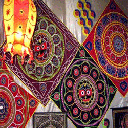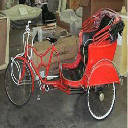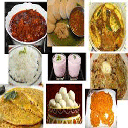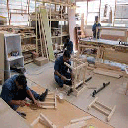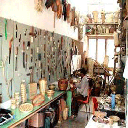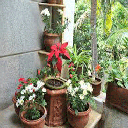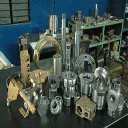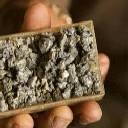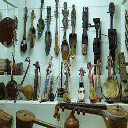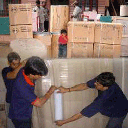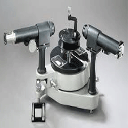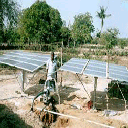Sikkim is one of the fortified place a small beautiful state of India in the Eastern Himalayas with steep mountains and deep valleys. The state borders Nepal to the west, Tibet to the north and east, and Bhutan to the southeast. The state of West Bengal borders Sikkim to its south.With just slightly over 500,000 permanent residents, Sikkim is the least populous state in India and the second-smallest state after Goa in total area. Despite its small area of 7,096 km2 (2,740 sq mi), Sikkim is geographically diverse due to its location in the Himalayas. The climate ranges from subtropical to high alpine. Kangchenjunga, the world's third-highest peak, is located on Sikkim's border with Nepal.Kanchenjunga, the world's third highest peak is located in Sikkim, straddling its northern border with Nepal. Sikkim is a popular tourist destination, owing to its culture, scenery and biodiversity. However, certain hill slopes have been converted into farm lands using terrace farming techniques and is used for cultivation. Numerous snow-fed streams in Sikkim have carved out river valleys in the west and south of the state. These streams combine into the Teesta and its tributary, the Rangeet. The Teesta, described as the "lifeline of Sikkim", flows through the state from north to south. The statehas 28 mountain peaks, 21 glaciers, 227 high altitude lakes, 5 hot springs, and over 100 rivers and streams. Eight mountain passes connect the state to Tibet, Bhutan and Nepal. The hills consist of Gneissose and Half-Schistose rocks. The soil is coarse, with iron oxide concentrations. This kind of soil is ideal for evergreen deciduous forests. Major portion of Sikkim territory also has Precambrian rocks. This causes soil erosion and land slides. Agriculture is the main occupation of the people. By and large, Sikkim's wealth is derived from agriculture and forests. Maize, paddy, wheat, barley and buck wheat are the main cereals grown in Sikkim. It has the largest area and the highest production of large cardamom in India. Cardamom and potatoes are two important cash crops. A special kind of tea much valued by the connoisseur for its taste and quality is also produced in the state. A government Tea Estate is being developed in Kewzing in the western part of Sikkim. There is one more tea estate at Temi. Under horticulture, large quantities of oranges and apple are raised. Vegetables, pineapple and banana are other cash crops of Sikkim. Summers are extremely humid though not necessarily hot as temperatures vary according to altitude. In the lower and middle hills (Gangtok, Darjeeling, Kalimpong) the maximum temperatures range between 25 and 28° C. Down in the deep river valleys it can get stuffy but is never unbearably hot. Winters are relatively cold at night but pleasant during the day. In the lower and middle hills (Gangtok, Darjeeling, Kalimpong), night temperatures average 5° C, and day temperatures hover around 15° C. The alpine region of course becomes very chilly, and temperatures remain well below freezing except during moments when sunlight can seep in through the clouds. The Monsoon winds strike Sikkim between late May and early June, and there is incessant rain all across the state till late September. Around July and August, torrential downpours sometimes last for several days at a stretch. Gangtok has an annual rainfall of 325 cm. Sikkim has 11 official languages: Nepali (which is its lingua franca), Bhutia, Lepcha (since 1977), Limbu (since 1981), Newari, Rai, Gurung, Mangar, Sherpa, Tamang (since 1995) and Sunwar (since 1996). English is taught in schools and used in government documents. Sikkim is the only state in India with an ethnic Nepalese majority. The predominant religions are Hinduism and Vajrayana Buddhism. Gangtok is the capital and the largest town. Sikkim has a booming economy dependent on agriculture and tourism, and has the only open border between India and China. Literacy in Sikkim is 69.68%, which breaks down into 76.73% for males and 61.46% for females. There are a total of 1157 schools, including 765 schools run by the State government, 7 central government schools and 385 private schools.welve colleges and other institutions in Sikkim offer higher education. The largest institution is the Sikkim Manipal University of Technological Sciences, which offers higher education in engineering, medicine and management. It also runs a host of distance education programs in diverse fields. There are two state-run polytechnical schools, Advanced Technical Training Centre (ATTC) and Centre for Computers and Communication Technology (CCCT) in Sikkim which offer diploma courses in various branches of engineering. ATTC is situated at Bardang, Singtam and CCCT at Chisopani, Namchi. Sikkim University a central university, began operating in 2008 at Yangang, which is situated about 28 km from Singtam.Many students, however, migrate to Siliguri, Kolkata, Bangalore and other Indian cities for their higher education.
East Sikkim - Gangtok:Enchey Monastery An important seat of the Nyingmapa order, this 200 year old Enchey Monastery is built on the site blessed by Lama Drupto Karpo, a tantric master known for his power of flying.. Every year, around January, ‘CHAM’ or religious masked dance is performed with great fanfare for two days. Flower Festival:Flower exhibitions are organized around the year at the Flower Show Venue near the White Memorial Hall Complex, Gangtok. during the spring Dodrul Chorten:The Dodrul Chorten or stupa was built by the Venerable Trullshi Rinpoche, head of the Nyimapa order of Tibetan Buddhism, in 1945. inside the Stupa, ther is a complete mandala set of Dorji Phurba ( Vajra Kilaya), a set of Kangur relics ( Holy Books ), Complete Zung ( mantras) and other religious objects. Around the chorten, which is one of the most important Stupas in Sikkim, are 108 Mani Lhakor (Prayer wheels). Namgyal Research Institute of Tibetology (NRIT):The Namgyal Institute of Tibetology, after the late Chogyal of Sikkim, Palden Thondup Namgyal whose brainchild it was has since become one of the most prestigious depository of Tibetan literature, rare manuscripts, paintings, thangkas, statues and religious objects and other works of art and history. Today, it is a renowned worldwide centre for study of Buddhist philosophy and religion. Rumtek Dharma Chakra Centre:The Rumtek Dharma Chakra Centre is the seat of the Kagyu order, one of the 4 major Tibetan Buddhist Sects. Since the late 1960’s , after the arrival of His Holiness the 16th Gyalwa Karmapa, the centre houses some of the world’s most unique religious scriptures and religious rare objects. Traditional in design, it is almost an replica of the original Kagyu Monastery in Tshurpu, in eastern Tibet. It has over 300 centres worldwide Tibet. It has over 300 centres worldwide. Directorate of Handicraft & Handloom:It is now known as the Directorate of Handicrafts and Handlooms as well as the Government Institute of Cottage Industries. Started during the time of the Chogyals of Sikkim, as a venture to protect and propagate the craft and skills of local and village artisans, it has become on t of the major attractions for people visiting Sikkim where traditional handcrafts, furniture, handlooms carpets and other products can be viewed and also purchased. Tsomgo Lake:It literally means the “source of the Lake†in the Bhutia language. Just about 40km away from Gangtok, the capital of State. This serene lake is situated at an altitude of 3,780 mtrs. The lake is about 1 km long, oval in shape, 15mtrs deep and is considered sacred by the local people. This placid lake remains frozen during the winter months upto mid-May. Between May and August, it is possible to see a variety of flowers bloom, including the rhododendrons, various species of primulas, blue and yallow poppies, iris, etc. It is also an ideal habitat of the Red Panda and various species of birds. Open for both the foreign and Indian nationals. Foreign visitors have to be in a group of 2 or more and have to apply for the visitors permit through a registered Travel agency. Nathula:56 kms from Gangtok is a 'Nathula' Pass at an altitude of 14,200 ft. bordering between India and China in the Tibetan Plateau. It is one of the highest motorable roads and richly covered by many varities of alpine flora and fauna. A tranquil place to visit. Nathula is open only for Indian nationals on Wednesdays, Thursdays, Saturdays and Sundays. The visitors have to get the permit to visit the place by applying to the Tourism Department through a registered Travel Agency. Tashi View Point:Situated along the Noth Sikkim Highway, it is only 8kms from Gangtok. From this point you get a breathtaking view of Mt. Kang-chen-Dzongaand Mt. Siniolchu, one of the most graceful peaks in the world. Ideal time to visit is early in the morning. Rabdentse Ruins:This was the second capital of the erstwhile Kingdom of Sikkim after Yuksom and till the year 1814 AD, the King of Sikkim had ruled the State from this place.Today, the ruins lie hidden from the main road at a walking distance from the Pemayagtse Monastery. Pemayangtse Monastery:The Monastery, located on a hill top at an altitude of 6840 ft. commands a magnificent panoramic view of the Himalayan ranges and the surrounding hills and country- side. This is one of the oldest monastary of the Nyngmapa sect of Mahanaya Buddhism, and was but by Lhatsun Chenpo during the reign of the 3rd Chogyal, Chagdor Namgyal in the 17th century. This monastary is about 6 kms from Gyalsing, the West district headquaters. Sanga-Choling Monastery:This monastery is situated on a ridge above Pelling and the famous Pemayangtse Monastery. Built in 1697 AD, it is considered to be one of the oldest monasteries in the State. In order to reach this Monastery one has to be prepared to spend at least 40 minutes walking up the steep hilly slope which leads through rich forest covers. Pelling:Pelling is fast emerging asa most favorite tourist destination in west Sikkim. Situated at an altitude of 6,800 ft., it offers a good view of the entire mountain ranges. Pelling is just 10 kms from Gyalsing. Khecheopairi Lake:Khecheapairi Lake is considered to be one of the sacred lakes of this State both by the Buddhist and the Hindus. The Lake remains hidden in the rich forest cover. It is believed that birds do not permit even a single leaf to float on he Lake surface. There is a rnotorable road from Pemayangtse right up to the lake area. Yuksam:This was the first capital of Sikkim, where according to the historical records; the first Chogyal of the Kingdom of Sikkim was consecrated in 1641 AD by three learned lamas. The evidence of the consecration ceremony is still intact in Norbugang Chorten in the form of stone seats and a foot prints of the Head Lama on a stone. Since the history of the State began from this place, these areas are now considered sacred by the people of Sikkim. Yuksam is served by all weather roads from Pemayangtse, which is at a distance of 32 kms from Yuksam. The trek to Dzongri and to the base camp of the famous Mt Khang- chen-Dzonga begins here. Several categories of accommodation are available in Yuksam for those desiring to spend a few days there. Dubdi Monastery:This was the first monastery established soon after the consecration ceremony of the first Chogyal. The monaster is located on a hill top above Yuksam surrounded by verdant forest. It can be approached by trekking only, negotiating steep slope for something like 32 to 35 minutes. It is an ideal place for Lamas seeking meditational recluse. Tashiding Monastery:This monastery is constructed on top of a heart shaped hill with the back drop of the sacred Mt. Khang-chen-Dzonga. According to Buddhist scriptures, Guru Padma Sambhava (Guru Rimpoche) blessed the sacred land of Sikkim in the 8th century AD from the spot. The monastery, however, was built in the 18th Century AD by Ngadak Sempa Chempo, one of the three lamas who had performed the consecration ceremony of the first Chogyal. Tashiding is also famous for the most holy chorten known as 'Thong-Wa-rang-Dol' which literally means 'Saviours by mere sight'. It is believed that the mere act of beholding it is supposed to wash away all he sins of the devotee. Another important feature in tashiding is the sacred water festival popularly knwon as 'Bhumchu'. It is a religious tradition unique to Tashiding Monastery only. Every year, on 14th and 15th day of the first Lunar Month, the Bhumchu Ceremony is celebrated with devotees coming from far and near to get the blessing of the holy water. Varsey:It lies at an elevation of 10,000 ft and motorable road access upto Hilley. An easy 4 kms trek from there takes one upto the Varsey Rhododendrons sanctuary. The place provides a magnificent view of the mountains. North Sikkim Kabi Lungchok:This historical pace is 17 kms from Gangtok on the North Sikkim Highway. This is where the historic treaty of blood brotherhood between the Lepcha Chief Te-Kung-Tek and the Bhutia Chief Khey-Bum-Sa was signed ritually. The spot where the ceremony took place is marked by a me- morial stone pillar amidst the cover of dense forest. Phodong Monastery:One of the six major monasteries in Sikkim, Phodong mon- astery is located in the North approximately 38 kms from Gangtok, 4 kms beyond Phodong is the recently renovated labrang Monastery unique in it architectural design Yumthang:Yumthang, at an elevation of 11,800 ft and 140 kms from Gangtok is a paradise for nature lovers with a fascinating blend of flora and fauna and breathtaking scenic grandeur. The valley boasts a large variety of Rhododendrons and other alpine flowers.Yumthang 'Tsa-Chu'or the hot spring of the left bank of Lachung Chu is immensely popular for its curative properties and healing power. For both foreign and domestic tourists, Yumthang Pack- age tours are organised only by the local registered travel agents . Depending upon one's convenience one can either opt for 3 days/2 nights package or 2 days/ 1 night package. Lachung:The village, spread out on either side of Lachung Chu, has managed to retain its unique culture and tradition. The Lachung Monastery on the slope opposite to the highway is a focal point of all religious function of the local inhabitants. To get a glimpse of the religious functions performed on auspicious occasions a visit to the Monastery should form a part of the tour itinerary. Lachung lies on the way to Yumthang Valley as we move from Gangtok. Yumthang is just 25 kms away. Lachen:Lachen is situated at an altitude of 2750 mtrs. and about 6 hrs. drive from Gangtok. The Lachen Monastery located on a top of the village commands a panoramic view of the surrounding hills and country side. Resorts, Hotels, and lodges are available for accommodation. Thangu:Thangu is at an altitude of 14,000 ft. (plus) and 3 hrs. drive from Lachen. A small village where the visitors usually acclimatize before they proceed to Guru-dongmar Lake or Muguthang. Guru-Dongmar Lake:Guru-dongmar Lake is considered as one of the sacred lakes of this State both by the Buddhist and the Hindus. The lake remains milky in colour through out, and it is be- lieved that Guru Padmasambhava had touched the lake whilst he visited Tibet from this area. South Sikkim Namchi:Namchi, meaning 'Sky High', nestled among the hills at an elevation of 5,500 ft commands panoramic view of the snow-capped mountains and vast stretches of valley. It is also the headquarters of the South District. The area is fast developing into a tourist destination with its immense potential for all round tourist activities. It is about 78 kms from Gangtok and 1 00 kms from Siliguri. Temi Tea Garden:The one and only tea estate existing in the State produces one of the top quality teas in the international market. The tea garden is spread out on a gentle hill slope originating from the Tendong Hill and provides a magnificent view for the surrounding villages. The visit to the fact" could be an eye opener for those wanting to know more about the tea processing methods. A night spent in a old British built bungalow located just below the tea garden could be an enthralling experience of linking the past to the present. A visit to the garden, enroute to the Tendong Hill, could be a rewarding experience for those who want to cornbine nature and culture as they keep trekking. Ravangla:At the base of Menam Hill is Ravangla, a small township and transit to various tourist destinations in South and West Sikkim. It is also an upcoming tourist spot, and transit point for trekkers to Menam Hill and Borong. There are accommodation facilities and numerous short nature trails. A trek down to the sacred cave 'Shar Chok Bephu', one of the four holiest caves in Sikkim, would be a memorable experience. Phur Tsa Chu:Situated on the bank of River Rangeet is the hot spring 'Phur Tsa Chu' half an hour drive from Legship and one hour drive from Jorethang. Pilgrims of all walks of life come to dip in this hot spring during month of January to March.


